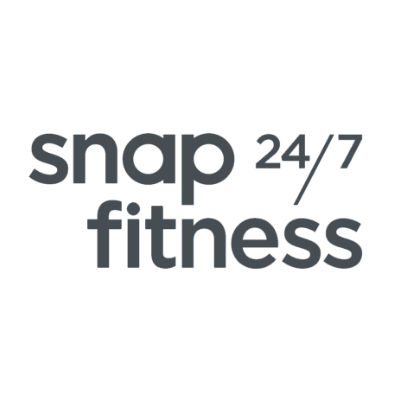The Benefits Of Becoming A Mobile Personal Trainer

Being a gym-based personal trainer might not be the best path for every fitness professional.
Maybe you don’t want to be stuck inside the four walls of a gym all day every day, or incur the costs of renting a space and paying bills if you’re just starting out.
Perhaps you’re someone with children or a second job, and you need more flexibility.
Being tied to a single gym location doesn’t work for everyone...and if you’ve felt the frustration of this limitation, you’re not alone.
Becoming a mobile personal trainer might be the answer you’ve been looking for...
Many trainers start by completing an online personal training course to build the skills and confidence needed to run a flexible, mobile business.
This article explores the benefits of ‘going mobile’ as a personal trainer.
It looks at how this business model can give you better work-life balance with your schedule, more flexibility with your time, increase the range of clients you can reach, and reduce your business costs.
By the end of this article, you'll see how embracing the mobile personal trainer model can transform your career, allowing you to provide exceptional service while enjoying the benefits of a flexible, client-centred approach.
Read on to discover how you can build a personal training business that works for you...
1. Flexibility and freedom
Create your own schedule
One of the standout benefits of being a mobile personal trainer is the unparalleled flexibility it offers. Unlike traditional gym-based trainers who are often bound by the facility’s operating hours, as a mobile trainer, you have the freedom to set your own working hours. This autonomy allows you to design a schedule that best suits your lifestyle and personal commitments.
Imagine starting your day with a sunrise session at a local park, followed by a mid-morning client in their home, and then perhaps taking a few hours off in the afternoon to run personal errands or enjoy some downtime. You can then pick up again with evening clients who prefer post-work sessions. This level of flexibility can significantly enhance your work-life balance, making it easier to juggle personal responsibilities, like childcare if you’re a parent, while still growing your business.
Furthermore, the ability to create your own schedule can lead to higher job satisfaction. When you are in control of your time, you can avoid burnout by spacing out your appointments in a way that works for you. For instance, if you find that you are most energetic and productive in the mornings, you can schedule your most challenging clients then, reserving the afternoons for administrative tasks or less intensive sessions.
This flexibility doesn’t just benefit you; it’s a massive selling point for clients too. Many people struggle to find time for fitness amidst their busy schedules. By offering flexible training times, you cater to their availability, whether it’s early mornings, late evenings, or even weekends. This convenience can set you apart from trainers who are limited to traditional gym hours, making your services more appealing and accessible to a broader range of clients.
Choose your training locations
As a mobile personal trainer, you’re not confined to the four walls of a gym. Instead, you have the freedom to train clients in a variety of environments, which can enhance the training experience.
This flexibility allows you to tailor each session to the individual needs and preferences of your clients, whether that’s in a park, at their home, or even at their workplace.
Training clients in different locations can break the monotony of a typical gym routine. Outdoor sessions in parks, for instance, can provide a refreshing change of scenery. The natural environment not only boosts mood and motivation but can also offer unique training opportunities. Think about using park benches for tricep dips, hills for sprints, or open spaces for agility drills. The possibilities are endless, and the variety can keep your clients engaged and excited about their workouts.
Home training is another excellent option that many clients appreciate. It eliminates the need for them to travel, saving time and making it easier to fit workouts into their busy schedules. Training in a familiar, comfortable environment can also reduce any intimidation or self-consciousness they might feel in a gym setting. You can bring the necessary equipment to their home and create a personalised workout space that caters to their specific goals and preferences.
Corporate wellness is a growing trend, and offering training sessions at clients’ workplaces can be a lucrative niche. By bringing fitness to the office, you provide a convenient solution for busy professionals who might struggle to find time for the gym. These sessions can be a great way to promote health and wellbeing within a company, potentially leading to group training opportunities and corporate contracts.
Increased client satisfaction is a significant advantage of these personalised training environments. When clients can choose where they train, they’re more likely to stick with their fitness routines. Personalised environments also allow you to design workouts that are more enjoyable and effective, tailored to the specific setting and client’s needs.
2. Increased client reach and convenience
Eliminate Geographical Barriers
One of the most compelling advantages of being a mobile personal trainer is the ability to eliminate geographical barriers. Unlike trainers who are tethered to a specific gym location, you can attract clients from various areas, significantly expanding your potential client base.
By offering home visits, you can tap into a market that traditional gyms often overlook. Many potential clients are unable or unwilling to travel to a gym due to time constraints, transportation issues, or personal preferences. By bringing your services directly to their doorstep, you provide a level of convenience that is hard to match. This approach not only makes fitness more accessible but also demonstrates your commitment to meeting clients where they are, both literally and figuratively.
In addition to home visits, you can further expand your reach by incorporating online sessions into your service offerings. Virtual training has become increasingly popular, especially in the wake of the COVID-19 pandemic. Clients appreciate the flexibility of being able to work out from anywhere, whether they're at home, on holiday, or travelling for work. With the right technology, you can deliver high-quality, personalised training sessions through video calls, complete with real-time feedback and adjustments.
This ability to transcend geographical limitations can set you apart from competitors and attract a diverse range of clients. You can market your services to people in different towns or even across the country, significantly widening your audience. Online training platforms also allow you to offer group classes, workshops, and specialised programmes, further diversifying your revenue streams.
Eliminating geographical barriers not only benefits your business but also enhances client convenience. Clients no longer have to factor in commute times or deal with the hassle of crowded gyms. They can choose the setting that best suits their needs, whether it's the comfort of their home, the tranquillity of a local park, or the convenience of an office environment.
Moreover, by offering flexible training options, you can cater to clients with varied schedules. Busy professionals, stay-at-home parents, and even seniors can find times that work best for them without the constraints of traditional gym hours. This flexibility can lead to higher client satisfaction and retention, as clients are more likely to stick with a fitness routine that fits seamlessly into their lives.
Enhance client convenience
Offering clients the convenience of training at their preferred locations is a game-changer. When you, as a mobile personal trainer, bring your services to them, you’re not just offering a workout—you’re offering a lifestyle solution that fits seamlessly into their daily routine.
Imagine a busy professional who struggles to make it to the gym due to long working hours. By providing the option to train at their office during a lunch break or right after work, you eliminate the time and effort it takes for them to commute to a gym. This convenience can be a significant selling point, making it easier for clients to commit to regular sessions without disrupting their schedules.
For stay-at-home parents, having a trainer come to their home can be invaluable. They can fit in a workout while their children nap or play nearby, removing the need for childcare arrangements and travel time. This personalised approach ensures that they can maintain their fitness routine without sacrificing family time or personal responsibilities.
This level of convenience significantly impacts client retention. When clients find it easy and enjoyable to stick to their fitness routine, they are more likely to continue working with you long-term. High client satisfaction often translates to better retention rates and, consequently, a more stable and growing client base.
Moreover, clients appreciate when their trainer goes above and beyond to accommodate their needs and preferences. This builds a strong rapport and trust, which are crucial for long-term client relationships. Satisfied clients are also more likely to refer your services to friends and family, further expanding your business through word-of-mouth recommendations.
In addition, the convenience factor can help in catering to special populations, such as seniors or individuals with mobility issues. For these clients, the comfort and safety of their own home can make all the difference in their ability to participate in regular exercise. By accommodating their specific needs, you provide a valuable service that can significantly improve their quality of life.
3. Cost-Effective Business Model
Lower Overhead Costs
One of the most attractive aspects of being a mobile personal trainer is the potential for significantly lower overhead costs. Traditional gym-based trainers often have to deal with substantial expenses related to renting or owning a gym space. These costs can include monthly rent, property taxes, insurance, and various other fees that quickly add up. As a mobile trainer, you can bypass many of these hefty expenses entirely.
Without the need for a physical gym, you also save on utilities such as electricity, water, and heating. These ongoing costs can be quite substantial in a commercial gym setting. Additionally, maintenance costs for gym equipment and facilities can be a major financial burden. By operating as a mobile trainer, you eliminate the need for constant repairs and upkeep of large, stationary equipment, which can significantly reduce your overall expenditure.
This leaner business model allows you to allocate more of your resources towards areas that directly benefit your clients and business growth. Instead of paying for gym overheads, you can invest in professional development, marketing, or even additional services that enhance your offerings. This financial flexibility can help you provide better value to your clients and stay competitive in the market.
Investment in portable equipment
Investing in portable fitness equipment is another key advantage of being a mobile personal trainer. The initial cost of purchasing versatile, high-quality portable equipment is relatively low compared to outfitting a full gym. Items like resistance bands, kettlebells, TRX systems, and adjustable dumbbells are not only affordable but also highly effective for a wide range of training modalities.
Portable equipment offers several benefits. First, it allows you to deliver diverse and comprehensive workouts in any location, whether it’s a client’s home, a park, or an office. This versatility is a significant selling point for clients who may feel limited by the traditional gym environment. With the right portable tools, you can tailor each session to the specific needs and goals of your clients, providing a personalised and engaging training experience.
Moreover, portable fitness equipment is easy to transport and store, making it convenient for both you and your clients. You can quickly set up and pack away, minimising downtime and maximising the efficiency of your sessions. This ease of use can also appeal to clients who might want to purchase their own equipment for additional training outside of your sessions, potentially leading to increased client engagement and better results.
The effectiveness of mobile training tools should not be underestimated. Many portable pieces of equipment can replicate the functionality of larger, stationary machines found in gyms. For instance, resistance bands can be used for strength training, flexibility work, and rehabilitation exercises, offering a wide range of applications. Kettlebells are excellent for improving strength, endurance, and cardiovascular fitness. TRX systems provide a full-body workout using suspension training that leverages body weight and gravity.
4. Unique Selling Proposition
Tailor-made training programs
One of the most compelling aspects of being a mobile personal trainer is the ability to create tailor-made training programs based on the environments in which your clients prefer to train. This personalised approach can lead to better client results and higher satisfaction.
When you train clients in their own homes, you can design sessions that utilise their available space and any equipment they might already have. This approach not only makes the workouts more practical and sustainable for clients but also helps them see how they can incorporate fitness into their everyday environment. You can use household items creatively for exercises, making fitness more accessible and less intimidating.
Training in outdoor settings like parks provides unique opportunities to use the natural environment to enhance workouts. Hills, benches, playgrounds, and open spaces can all be incorporated into your training plans. This variety keeps workouts engaging and can improve motivation and adherence to the fitness program. Clients often appreciate the fresh air and change of scenery, which can make their fitness journey more enjoyable.
Customising training sessions based on the client’s environment also allows for a more personalised and attentive approach. You can address specific needs, preferences, and goals more effectively than in a generic gym setting. For instance, if a client is preparing for a hiking trip, you can design sessions that mimic the challenges they’ll face, using local trails and inclines. If a client wants to improve their functional strength for daily activities, you can create workouts that incorporate movements and exercises relevant to their routine.
This level of personalisation can lead to better results, as clients are more likely to stay committed to a program that feels tailored to them.
Furthermore, satisfied clients lead to word-of-mouth referrals to friends and family. They’ll talk about how their trainer comes to them, how the workouts fit seamlessly into their lives, and how they’ve seen tangible improvements – all of which are powerful testimonials for your business.
Conclusion
Becoming a mobile personal trainer offers numerous advantages that can significantly enhance your career and business prospects. By embracing the flexibility and freedom of this model, you can create a schedule that suits your lifestyle while offering clients the convenience of training at their preferred locations. This adaptability can lead to higher client satisfaction and retention, as you tailor each session to their individual needs and environments.
The cost-effective business model of mobile personal training is another compelling benefit. By saving on the overhead costs associated with renting or owning a gym space, you can invest in high-quality portable equipment and other resources that directly benefit your clients. This leaner approach allows you to allocate funds more strategically, supporting professional development and marketing efforts that can further grow your business.
Your unique selling proposition as a mobile trainer sets you apart in a competitive market. Offering flexible, tailor-made training programs and providing individualised attention helps build strong client relationships. Enhanced communication and real-time feedback ensure clients receive the support they need to achieve their fitness goals, fostering loyalty and increasing the likelihood of referrals.
If you want a career in fitness that’s flexible, fun, and fits into your life, you can gain the knowledge and qualifications you need with one of our THFI personal trainer courses.
Explore your options here.


























